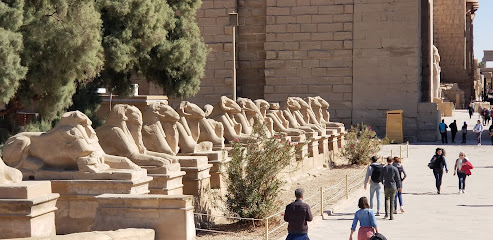
Remaining Luxor Obelisk: A Silent Witness to History
A towering testament to ancient Egyptian power, the Remaining Luxor Obelisk stands as a sentinel of history at the entrance to Luxor Temple.
Standing tall at the Luxor Temple, the Remaining Luxor Obelisk is a striking monument to ancient Egyptian craftsmanship. Once part of a pair, it bears hieroglyphs detailing the reign of Ramses II and serves as a powerful reminder of Luxor's glorious past.
A brief summary to Remaining Luxor Obelisk
- PJ2Q+4WG, Luxor, Luxor City, Luxor Governorate, EG
Local tips
- Visit early in the morning or late in the afternoon to avoid the crowds and harsh midday sun.
- Take your time to examine the hieroglyphs; they tell the story of Ramses II's reign.
- Hire a local guide to learn about the obelisk's history and significance within the Luxor Temple complex.
Getting There
-
Walking
From most hotels along the Corniche, the Remaining Luxor Obelisk is easily accessible by foot. Head south along the Corniche, and you'll find the Luxor Temple entrance. The obelisk is located near the entrance of the temple. Walking is free and offers a pleasant way to experience the city.
-
Taxi
Taxis are readily available throughout Luxor. A short taxi ride from anywhere in the city center to the Luxor Temple should cost approximately 30-50 EGP. Always negotiate the fare before starting your journey. Tipping is not mandatory but appreciated.
-
Public Transport
Local microbuses (service taxis) operate on circuits around the town. Any journey in a microbus should cost around 2 EGP. Get off near the Luxor Temple; the obelisk is a short walk from there. Microbuses can be crowded but offer an inexpensive way to get around.
Discover more about Remaining Luxor Obelisk
Iconic landmarks you can’t miss
Ancient Luxor Quay
0.1 km
Explore Ancient Luxor Quay: a historical landmark on the Nile, offering stunning views, cultural experiences, and access to Luxor's famous attractions.
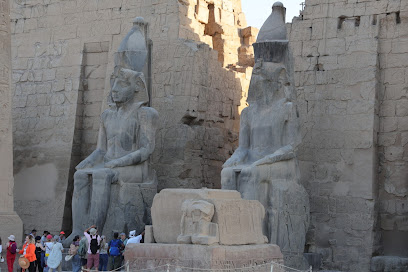
ميدان أبوالحجاج
0.2 km
Experience the vibrant heart of Luxor at Abu al-Haggag Square, where history, culture, and local life intertwine in a captivating Egyptian experience.
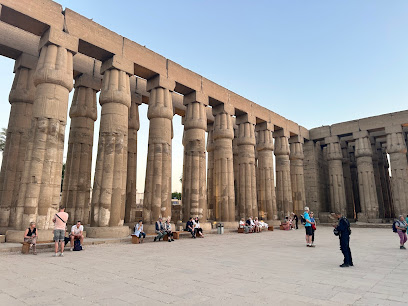
البنك الأهلي المصري فرع الاقصر
0.6 km
Discover convenience at the Egyptian National Bank in Luxor, the essential stop for travelers needing reliable banking services while exploring ancient Egypt.
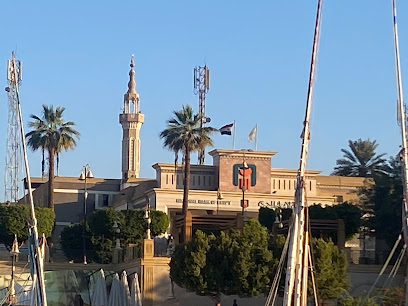
NBE ATM - Sofitel Winter Palace Hotel 1 Luxor - فندق سوفتيل 1 الأقصر
0.6 km
Conveniently located at the Sofitel Winter Palace Hotel, NBE ATM provides 24/7 access to cash for tourists exploring the historical treasures of Luxor.

Luxor Nile Ferry - West Bank
0.7 km
Cross the Nile and journey back in time! The Luxor Nile Ferry offers an affordable and scenic gateway to the West Bank's ancient wonders.
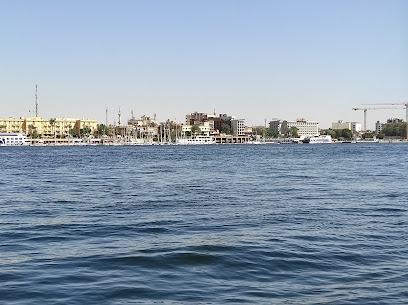
Luxor day tour to East & West Banks
0.7 km
Discover the wonders of Luxor's West Bank: Valley of the Kings, Hatshepsut Temple, and Colossi of Memnon. A journey through ancient Egyptian history.
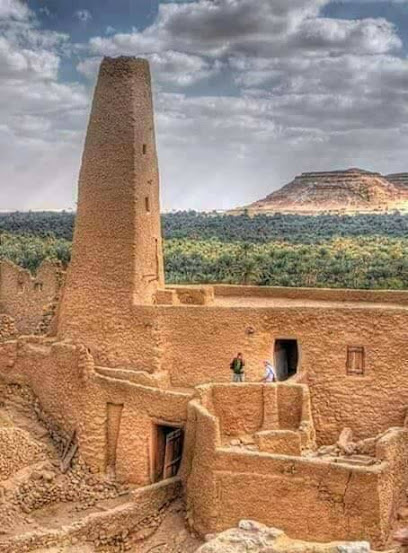
Alexbank
0.7 km
Experience the convenience of Alexbank in Luxor, your essential stop for financial services amidst the treasures of ancient Egypt.

El-Gezira Hotel & Restaurant
0.9 km
Experience tranquility on Luxor's West Bank with Nile views, delicious cuisine, and live music at El-Gezira Hotel & Restaurant.
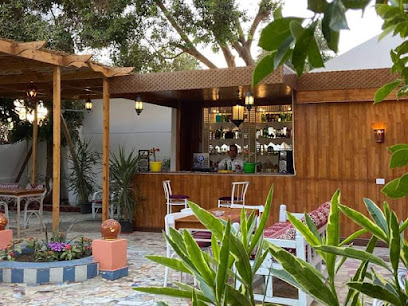
Luxor Egypt
1.2 km
Discover the enchanting city of Luxor, Egypt, where ancient history and vibrant culture come together to create a timeless travel experience.

West Bank Private Transport Luxor
1.3 km
Explore Luxor's West Bank in comfort: private car service to ancient wonders, reliable and highly-rated transportation.
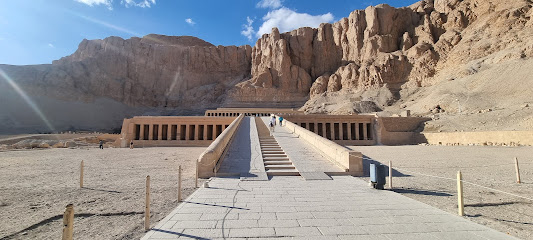
Luxor city - Egypt
1.5 km
Explore Luxor: where ancient pharaohs' legacies meet vibrant modern Egyptian life along the majestic Nile River.
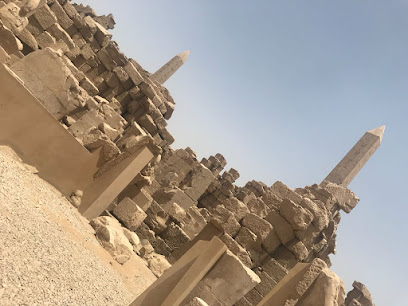
Nile Holiday
2.2 km
Explore Luxor with Nile Holiday Travel Agency, your trusted partner for unforgettable experiences in the land of pharaohs.
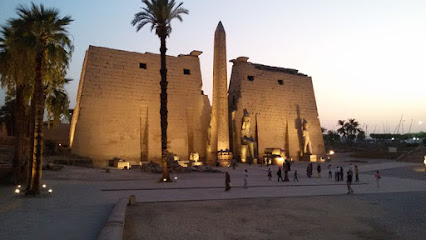
Rovine del tempio di thot
2.3 km
Esplora le antiche Rovine del Tempio di Thot nel complesso del Tempio di Karnak a Luxor, in Egitto, un sito dedicato al dio della saggezza.
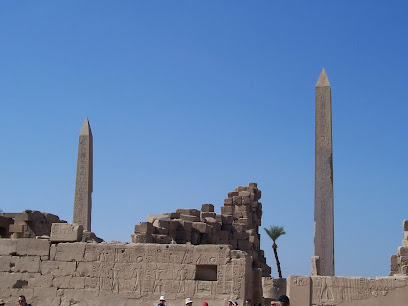
Ramesses III Temple
2.6 km
Explore the Temple of Ramesses III in Luxor, a magnificent mortuary temple with stunning reliefs and a rich history dating back to the New Kingdom.
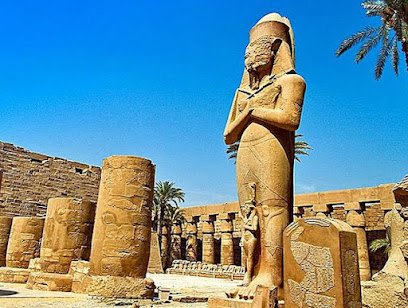
Precinct of Amun-Re
2.7 km
Explore the awe-inspiring Precinct of Amun-Re in Luxor, the largest religious complex in the world, and discover ancient Egypt's grandeur.
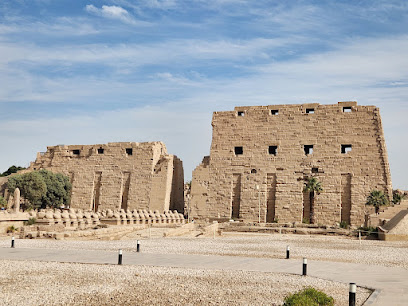
Unmissable attractions to see
First Pylon Luxor Temple
0.0 km
Experience the grandeur of ancient Egypt at the First Pylon of Luxor Temple, a historical landmark filled with stunning architecture and rich cultural heritage.
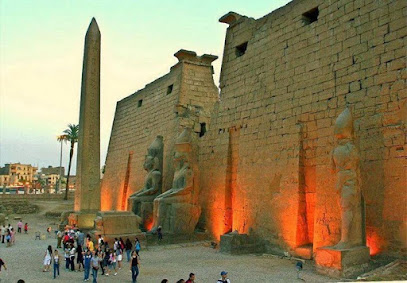
Abou al-Haggag Mosque
0.0 km
Explore the serene beauty of Abou al-Haggag Mosque in Luxor, a spiritual oasis blending rich history and stunning architecture.
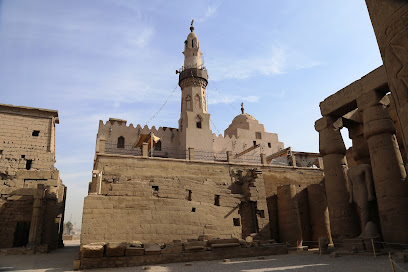
Luxor Temple Ticket Office
0.1 km
Explore the Luxor Temple, an ancient Egyptian marvel showcasing stunning architecture and rich historical significance in the heart of Luxor.
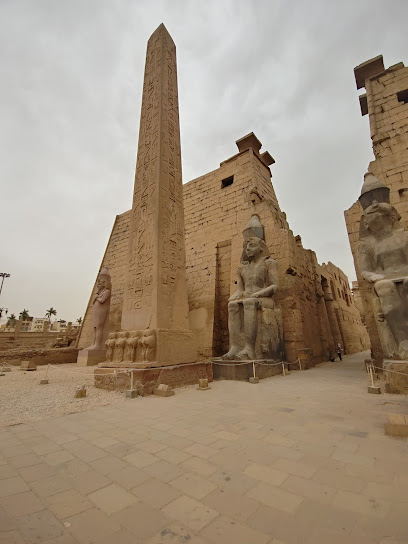
Avenue of Sphinxes
0.1 km
Explore the Avenue of Sphinxes in Luxor, Egypt—where ancient history comes alive amidst majestic statues and breathtaking temples.
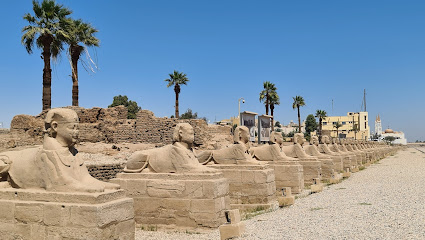
Luxor Temple Square ساحة معبد الاقصر
0.1 km
Discover the enchanting Luxor Temple Square, a mesmerizing blend of ancient history and vibrant culture in the heart of Luxor, Egypt.
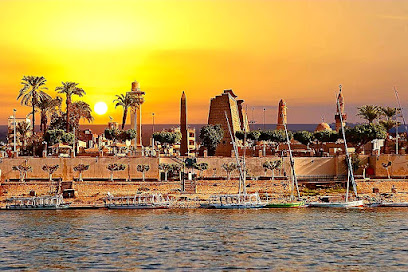
Luxor Temple
0.1 km
Explore the magnificent Luxor Temple, an archaeological marvel that embodies the grandeur and spirituality of ancient Egypt's rich history.
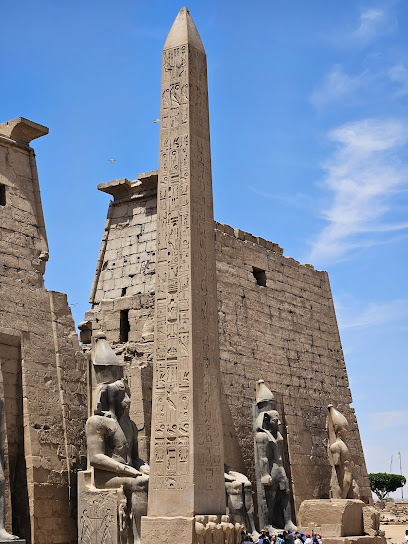
Sayed Water Taxi Luxor
0.2 km
Discover the beauty of Luxor from the Nile with Sayed Water Taxi, a unique and serene way to explore this historic city.
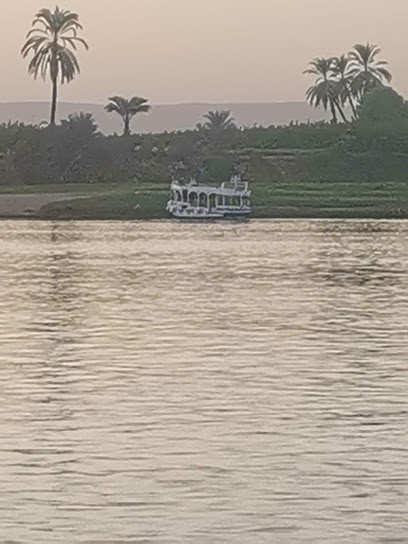
Sayed felucca Luxor
0.2 km
Experience the enchanting beauty of the Nile River with a traditional felucca boat tour in Luxor, where history and nature intertwine.

Barca solare del dio Rê
0.2 km
Experience the beauty and history of Luxor at Barca Solare del Dio Rîa, a mesmerizing attraction by the Nile River.
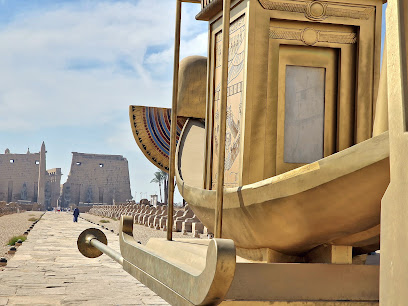
El - Souk
0.2 km
Experience the vibrant culture and flavors of Luxor at El-Souk, a bustling market filled with local crafts and delicious Egyptian cuisine.
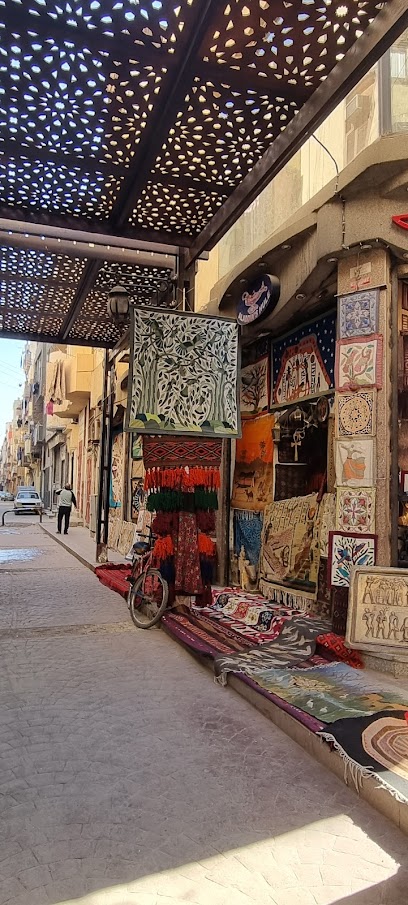
SkyScape Hot Air Balloon
0.2 km
Experience Luxor's breathtaking landscapes and ancient wonders from above with SkyScape Hot Air Balloon, the ultimate adventure for every traveler.
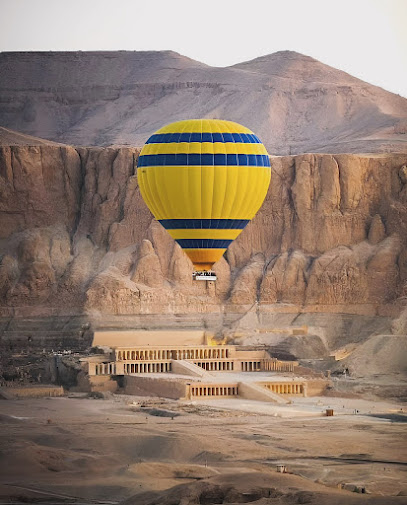
Louxor
0.2 km
Explore Luxor, the world's greatest open-air museum, featuring ancient temples, tombs, and breathtaking Nile views that unveil Egypt's rich history.

Mummification Museum
0.2 km
Explore the Mummification Museum in Luxor, where ancient Egyptian beliefs and practices come to life through fascinating artifacts and immersive exhibits.
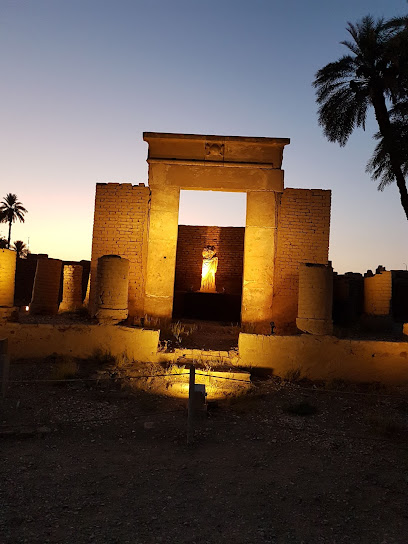
Luxor Sign
0.3 km
Discover the Luxor Sign, an iconic symbol welcoming you to Egypt's ancient treasures and vibrant culture in Luxor City.
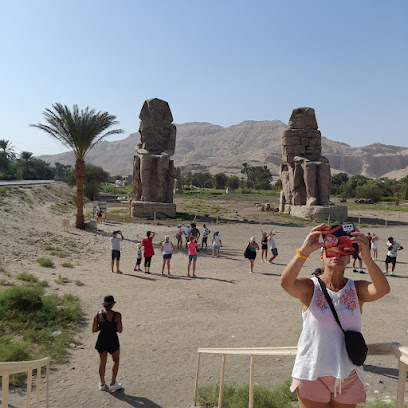
Lotus Papyrus Luxor
0.3 km
Discover the vibrant art and culture of Egypt at Lotus Papyrus Luxor, where tradition meets contemporary creativity in a serene gallery setting.
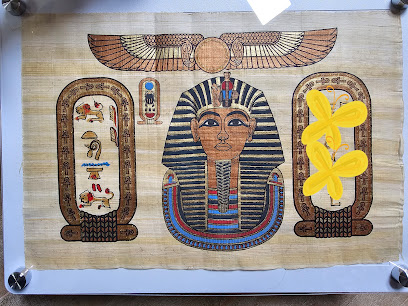
Essential places to dine
Aboudi Coffee Break
0.2 km
Experience authentic Egyptian flavors at Aboudi Coffee Break in Luxor—where great food meets warm hospitality.
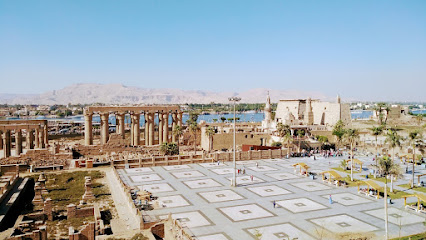
Al Sahaby Lane Restaurant
0.3 km
Experience authentic Egyptian cuisine at Al Sahaby Lane Restaurant in Luxor – where tradition meets taste.
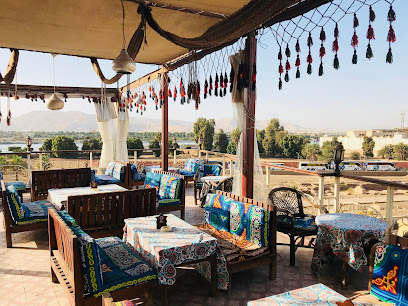
Jamboree Restaurant
0.3 km
Discover the vibrant flavors of Egypt at Jamboree Restaurant in Luxor—where tradition meets taste in an unforgettable dining experience.
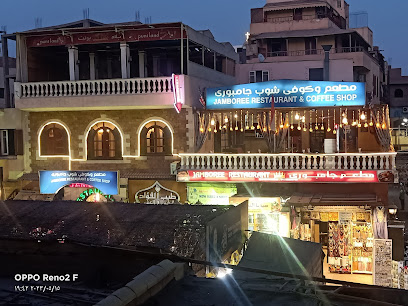
Georgian Nile View
0.3 km
Experience authentic cuisine with stunning views at Georgian Nile View in Luxor - where every meal is a celebration by the Nile.
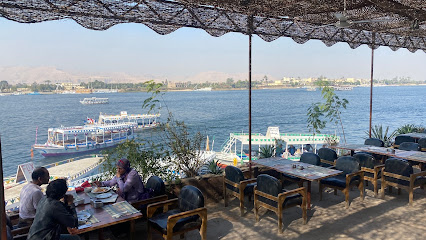
1886 Restaurant
0.4 km
Indulge in exquisite cuisine with stunning Nile views at 1886 Restaurant in Luxor - where fine dining meets cultural elegance.

مطعم النخيل داخل فندق سوفيتيل وينتر بالاس
0.5 km
Experience exquisite fine dining at مطعم النخيل inside Sofitel Winter Palace, where luxury meets authentic Egyptian flavors.

LA CORNICHE RESTAURANT
0.5 km
Experience exquisite Western cuisine at La Corniche Restaurant in Luxor, where breathtaking Nile views meet unforgettable flavors.
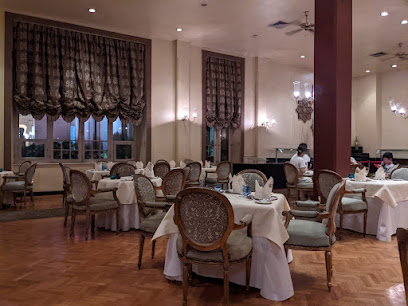
Restaurant El-Kababgy Luxor
0.5 km
Experience authentic Egyptian flavors at Restaurant El-Kababgy Luxor – where tradition meets taste along the beautiful Nile.
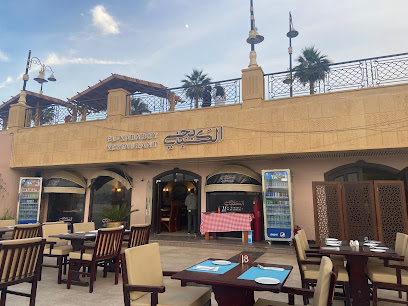
Oasis Palace
0.6 km
Experience exquisite flavors at Oasis Palace in Luxor – where traditional Egyptian cuisine meets modern dining.

Sofra
0.7 km
Experience authentic Egyptian cuisine at Sofra in Luxor - where traditional flavors meet modern dining.
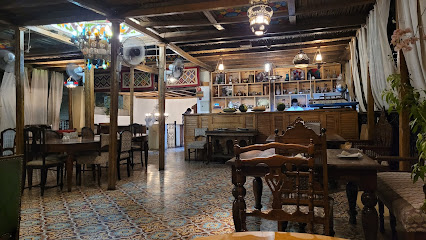
مطعم توت عنخ امون Tout Ankh Amoun Restaurant
0.7 km
Experience authentic Egyptian cuisine with stunning Nile views at Tout Ankh Amoun Restaurant in Luxor.
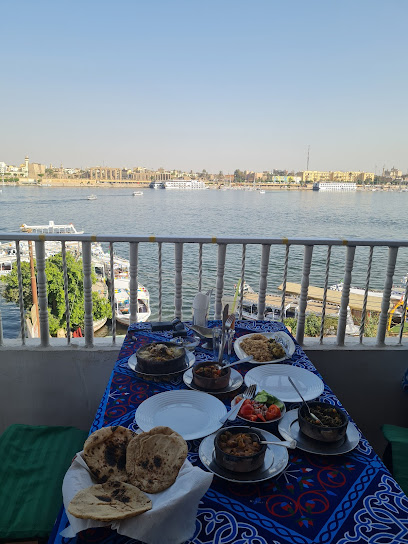
Kings Gate Cafe
0.7 km
Experience culinary excellence at Kings Gate Cafe with breathtaking views along the Nile River in Luxor.
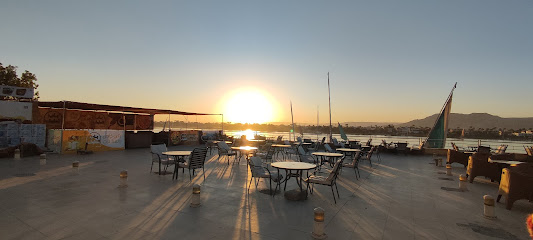
Cup Coffee Sunrise Restaurant
0.7 km
Experience authentic Egyptian flavors at Cup Coffee Sunrise Restaurant in Luxor, where every meal comes with stunning views and warm hospitality.
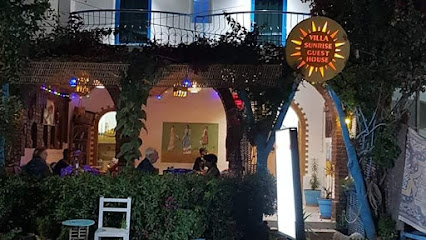
Nile View Restaurant
0.7 km
Experience authentic Egyptian barbecue with stunning Nile views at Nile View Restaurant in Luxor.

Nile Valley Hotel & Restaurant
0.7 km
Experience authentic Egyptian hospitality at Nile Valley Hotel & Restaurant, your gateway to exploring ancient treasures along the banks of the Nile.
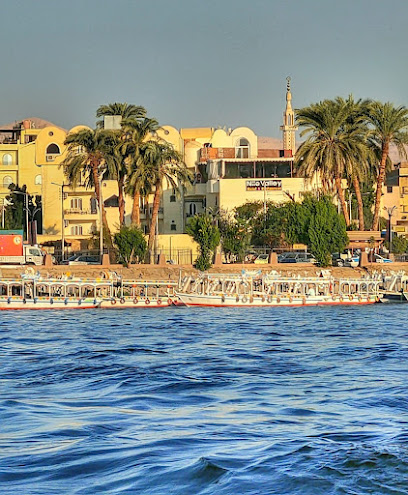
Markets, malls and hidden boutiques
Ata Bazar
0.1 km
Explore Ata Bazar in Luxor for unique antiques, handcrafted jewelry, and local art that embody the rich culture of Egypt.
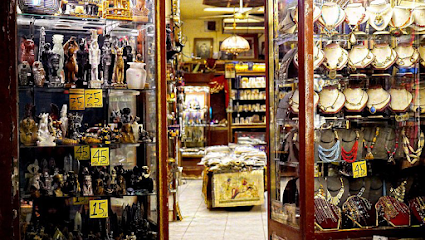
Fair Trade Center
0.1 km
Immerse yourself in Luxor's vibrant culture at the Fair Trade Center, where unique handicrafts and ethical shopping meet.
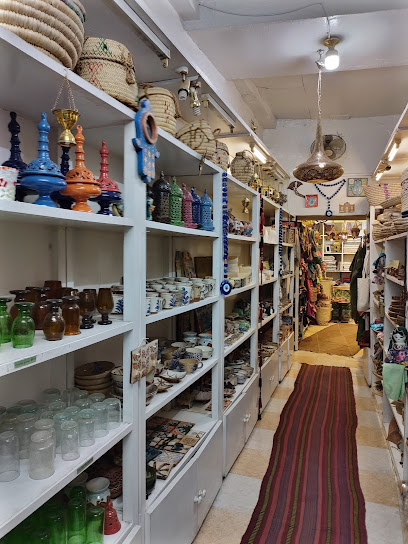
Sam House Luxor gold and silver smith
0.1 km
Explore the exquisite craftsmanship of gold and silver jewelry at Sam House Luxor, where tradition meets elegance in every piece.
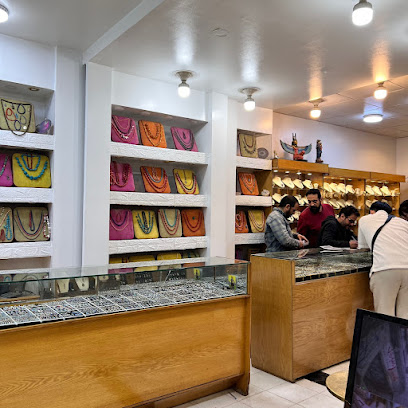
Habiba Gallery
0.2 km
Explore the vibrant handicrafts of Luxor at Habiba Gallery, where tradition meets artistry in every exquisite piece.

Mark Gewellary
0.2 km
Explore the exquisite craftsmanship of Mark Gewellary, a premier silversmith in Luxor, where tradition meets contemporary elegance in silver artistry.
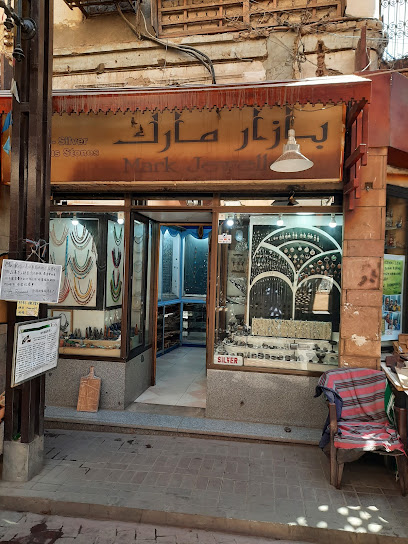
Tienda de recuerdos
0.2 km
Discover authentic Egyptian souvenirs at Tienda de Recuerdos in Luxor, a vibrant store filled with handcrafted treasures that embody the spirit of Egypt.

Lotus Bazar
0.2 km
Explore Lotus Bazar in Luxor for unique fashion accessories, exquisite jewelry, and enchanting perfumes that embody the essence of Egyptian craftsmanship.

Pr-Ba Concept Store (Luxor)
0.2 km
Explore the Pr-Ba Concept Store in Luxor for unique handicrafts and souvenirs that capture the essence of Egyptian culture.

El Fashny Shop - متجر الفشني
0.3 km
Discover unique Egyptian gifts and souvenirs at El Fashny Shop in Luxor, where tradition meets artistry in a charming shopping experience.

Gaddis & Co.
0.5 km
Discover unique souvenirs and local craftsmanship at Gaddis & Co., the charming gift shop along the Nile in Luxor.
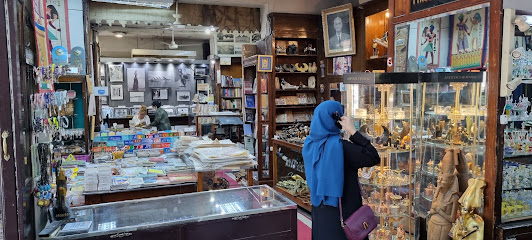
مصر للاسواق الحرة ( الاقصر )
0.5 km
Experience the essence of Luxor shopping at مصر للأسواق الحرة, your destination for unique home goods and exquisite Egyptian perfumes.

Nobles Art Gallery
0.5 km
Explore a treasure trove of exquisite antiques and artworks at Nobles Art Gallery, the heart of Luxor's rich cultural heritage.
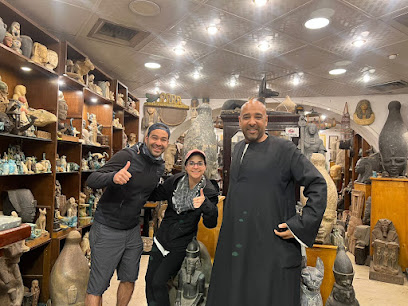
Hassle Free Shop
0.6 km
Explore the enchanting Hassle Free Shop in Luxor, the perfect destination for unique books, antiques, and souvenirs reflecting Egyptian culture.
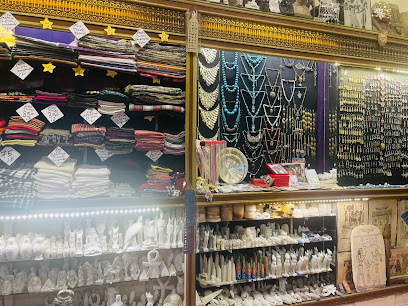
Luxor Fruit and Vegetable Market
0.7 km
Dive into the heart of Luxor with a visit to the Fruit and Vegetable Market, where local flavors and vibrant culture come alive.
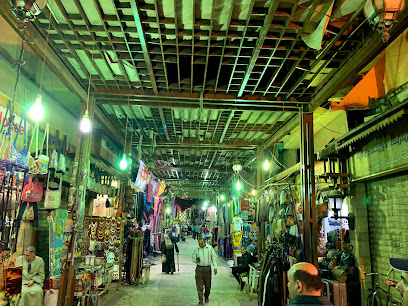
Huu Natural Shop
0.7 km
Explore Huu Natural Shop in Luxor for an authentic taste of Egyptian natural oils and local products, perfect for health enthusiasts and souvenir seekers.

Essential bars & hidden hideouts
Snack Time
0.2 km
Experience the vibrant flavors of Egypt at Snack Time, your go-to spot for authentic cuisine and delicious pizza delivery in Luxor.

حسني لطيف سلامة
0.2 km
Experience the vibrant nightlife of Luxor at حسني لطيف سلامة, where local charm meets refreshing drinks in a lively atmosphere.

Wine palace
0.2 km
Discover the enchanting Wine Palace in Luxor, where local flavors and a vibrant atmosphere meet for a memorable evening.
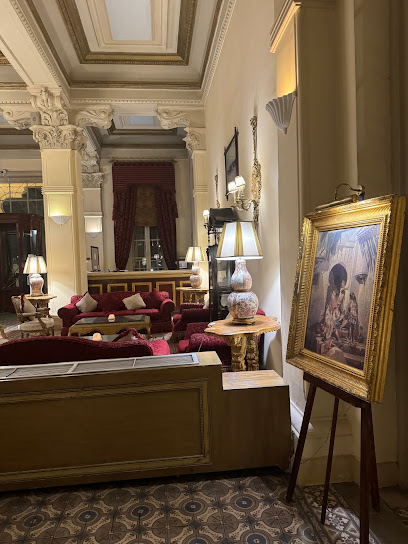
Royal Bar
0.5 km
Experience the vibrant ambiance of the Royal Bar in Luxor, where exquisite drinks meet stunning Nile views for an unforgettable evening.
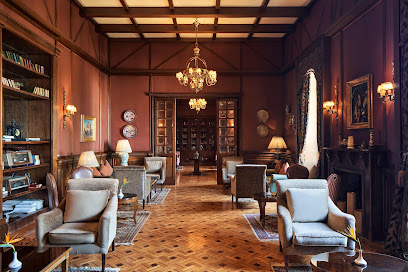
G.old
0.7 km
Experience vibrant nightlife at G.old, a premier bar in Luxor, Egypt, offering an extensive drink selection and a lively atmosphere.
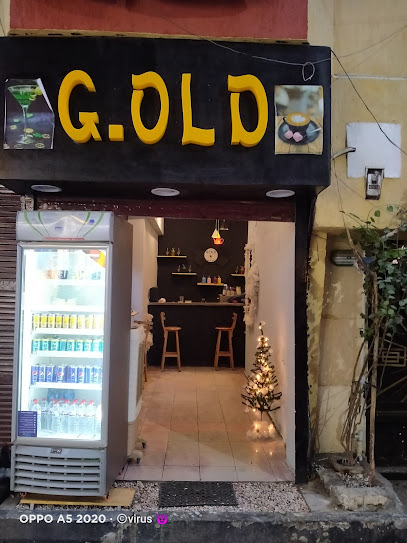
انتيكةAntika
0.8 km
Discover Antika, Luxor's vibrant cocktail bar, where exquisite drinks and lively ambiance create unforgettable moments.

Bar & Byke Rent, West Luxor
1.5 km
Discover the perfect blend of relaxation and adventure at Bar & Byke Rent in Luxor, featuring refreshing drinks and bike rentals for exploring ancient wonders.

مصطفى تاكس
1.5 km
Discover the vibrant nightlife at مصطفى تاكس, a lively bar in Luxor offering refreshing drinks and a welcoming atmosphere for travelers.

The King's Head Pub
1.6 km
Experience the vibrant local culture at The King's Head Pub, the perfect spot for relaxation and traditional Egyptian hospitality in Luxor.

ميرفيس الأيرلندية بار Murphys Irish Bar
1.6 km
Discover the heart of Irish culture at Murphys Irish Bar in Luxor, where tradition meets vibrant entertainment and delightful cuisine.
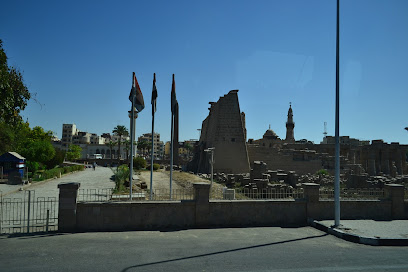
Nile Bar & Lounge
1.7 km
Experience the elegance of Nile Bar & Lounge in Luxor, where exquisite cocktails meet breathtaking views of the Nile River.

Sukkareya Lobby Bar
2.3 km
Discover the vibrant atmosphere of Sukkareya Lobby Bar in Luxor, where local flavors meet exceptional service for a memorable experience.
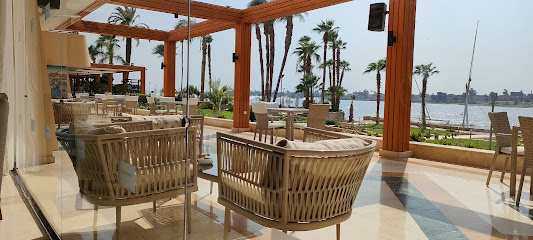
Karnak Restaurant
2.3 km
Discover the flavors of Egypt at Karnak Restaurant in Luxor, where authentic cuisine meets a welcoming atmosphere for an unforgettable dining experience.
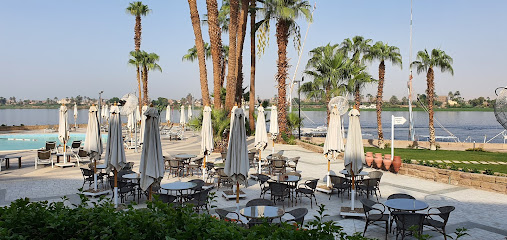
White Coffee & Restaraunt
2.3 km
Experience the best of traditional Arab cuisine and modern coffee culture at White Coffee & Restaurant in Karnak, Luxor.
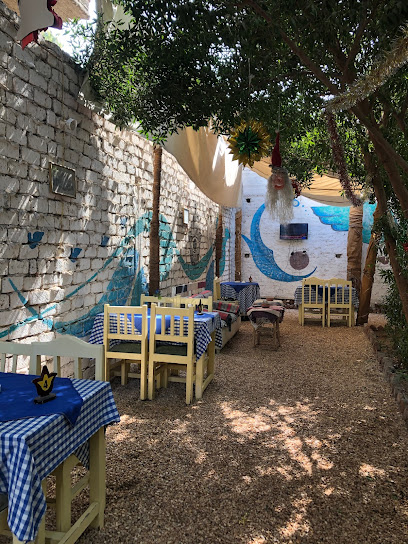
El Tawab Restaurant & Coffee Shop
2.6 km
Experience the flavors of Luxor at El Tawab Restaurant & Coffee Shop, where local cuisine meets international delights near Karnak Temple.
